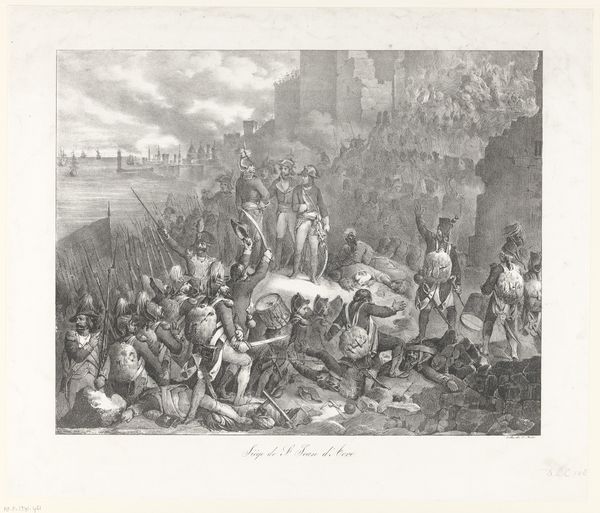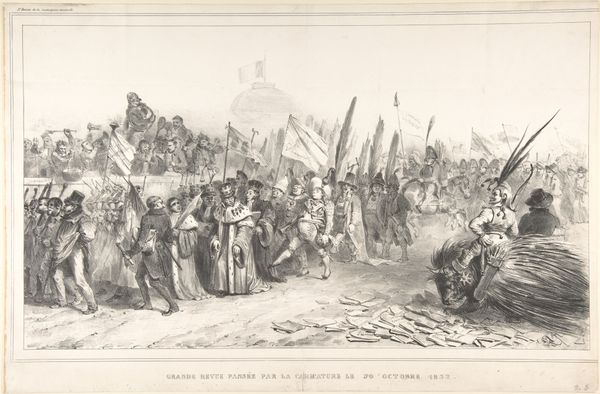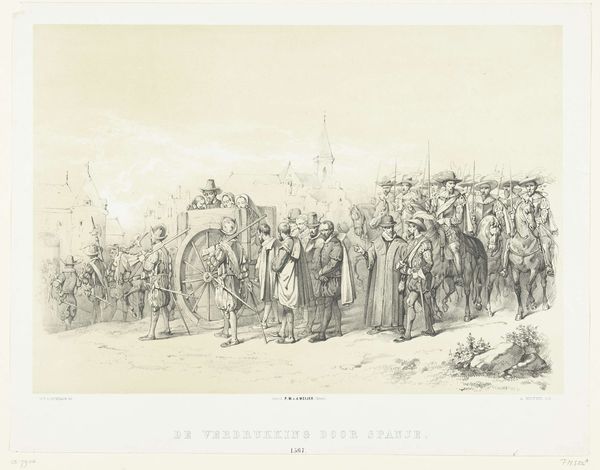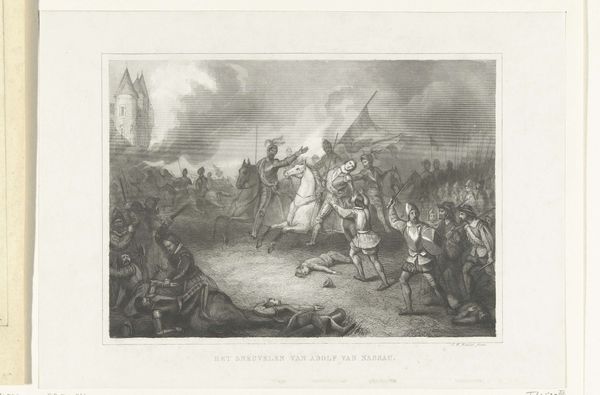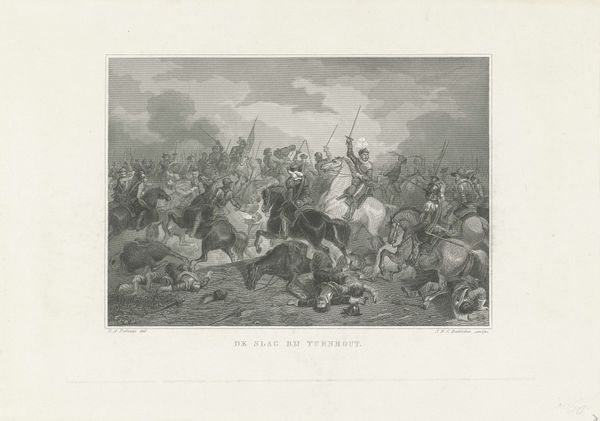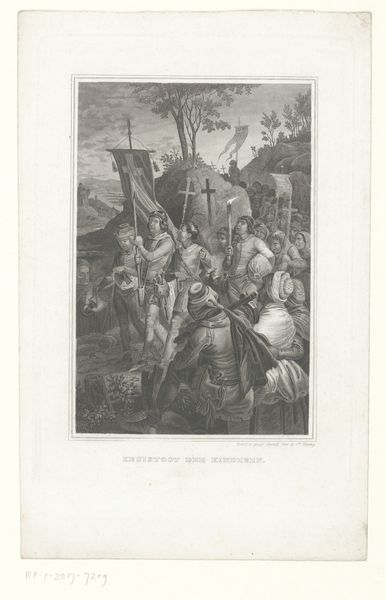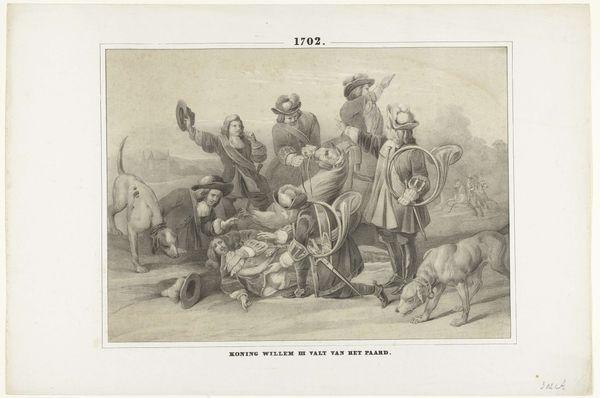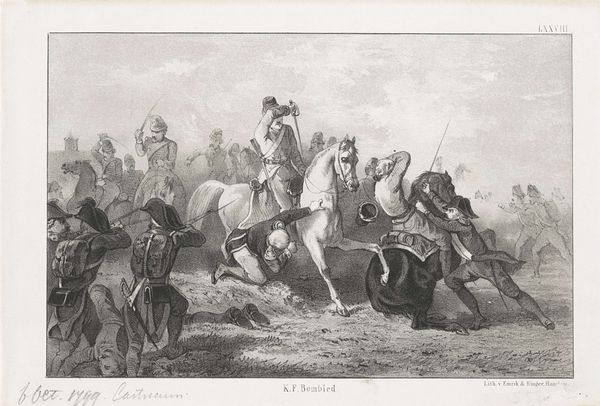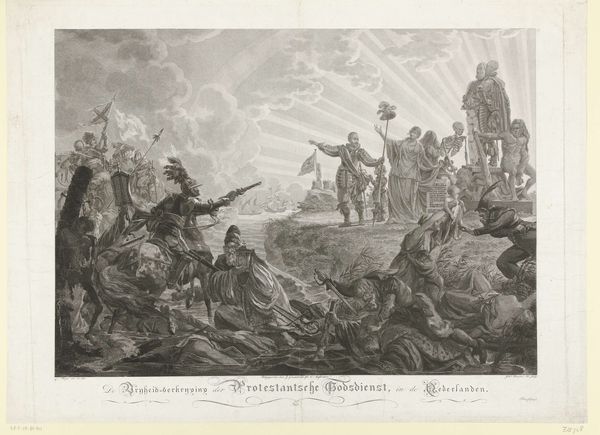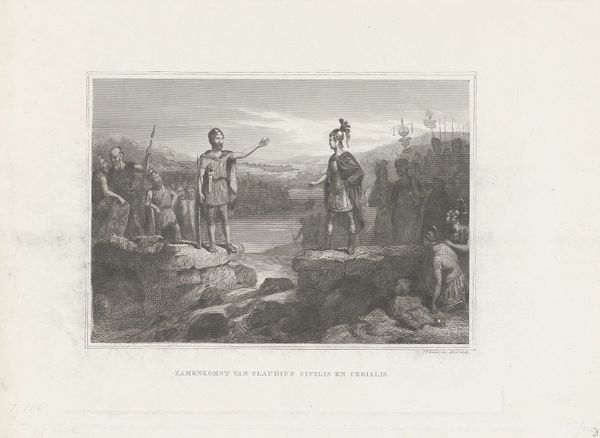
Maurits knielt na de overwinning bij de slag bij Nieuwpoort, 1600 1840 - 1884
0:00
0:00
print, engraving
# print
#
old engraving style
#
genre-painting
#
history-painting
#
academic-art
#
engraving
Dimensions: height 191 mm, width 248 mm
Copyright: Rijks Museum: Open Domain
Curator: Editor: This is "Maurits kneels after the victory at the Battle of Nieuwpoort, 1600", created between 1840 and 1884 by Jan Frederik Christiaan Reckleben. It's currently at the Rijksmuseum, and done as an engraving. It depicts the aftermath of a battle. What strikes me is how the details are rendered by this method of printmaking. What do you think of it? Curator: As a materialist, I immediately consider the socio-economic context that enabled this print’s production. The lines are precise, created by labor, etched into metal. Think of the etcher, the engraver, the printer… Consider the market for this imagery. This image simplifies the messy reality of warfare, sanitizing conflict for consumption. To what end? Editor: You make an interesting point! I hadn't thought about it in terms of labor. Seeing the result of that labor – the finished engraving – do you see it challenging traditional notions of fine art given the medium's accessibility through printmaking? Curator: Precisely! The original event, the battle, has now become a commodity, easily disseminated. Printmaking allowed for a wider audience. The accessibility erodes the boundary between high art and a more democratic visual culture, doesn’t it? Editor: So, the act of making the art becomes an important lens through which to understand not just its historical subject matter, but also its potential cultural impact through distribution and consumption? Curator: Absolutely. The very materials and process point to a democratization of imagery and the reframing of historical narrative itself. The print *is* the message! What are your closing thoughts? Editor: I've learned to appreciate not just what the artwork depicts, but also the social implications embedded within its production and dissemination. Curator: Indeed! Material choices reveal so much. We often forget the context within which those choices take place.
Comments
No comments
Be the first to comment and join the conversation on the ultimate creative platform.
